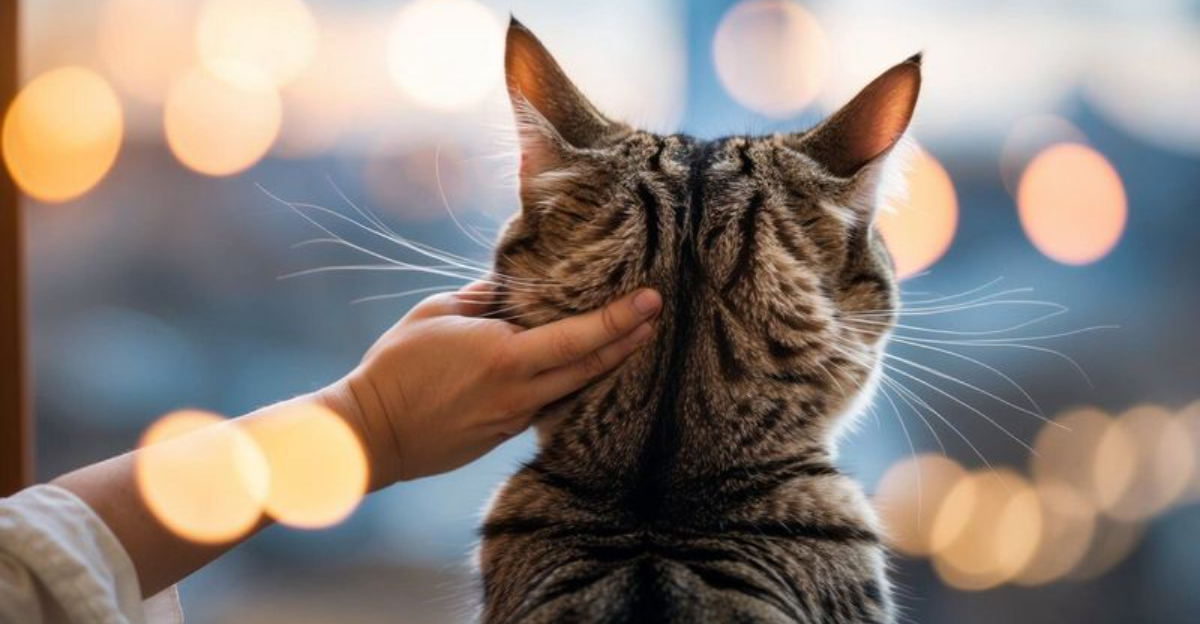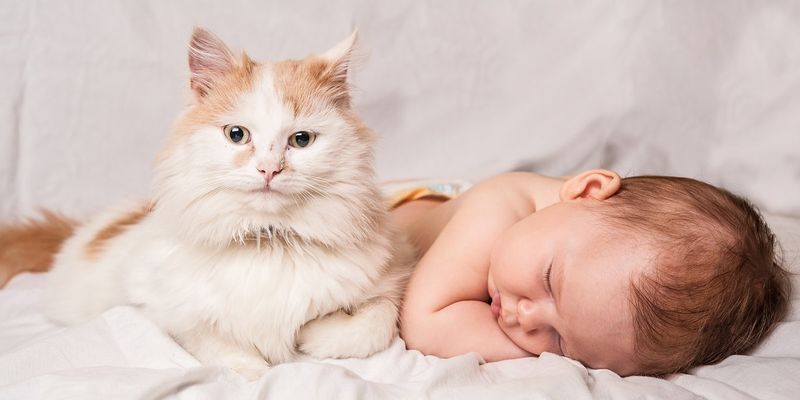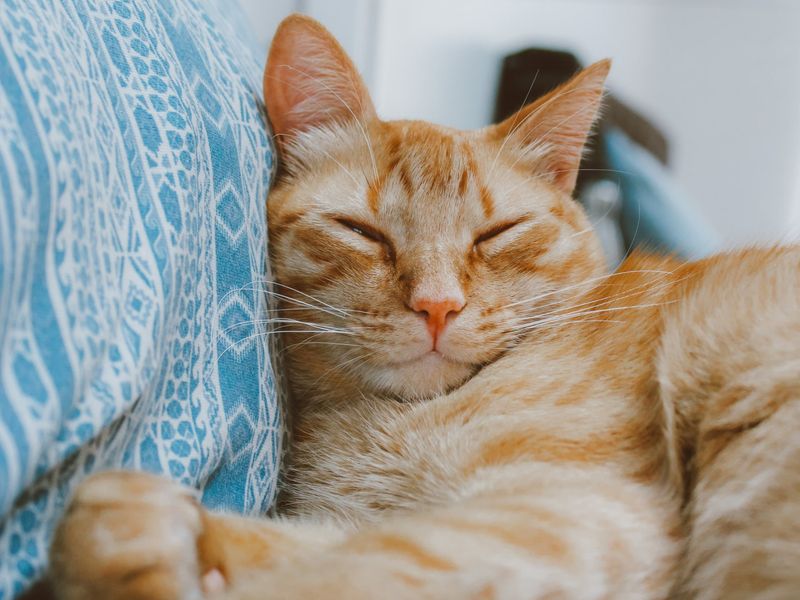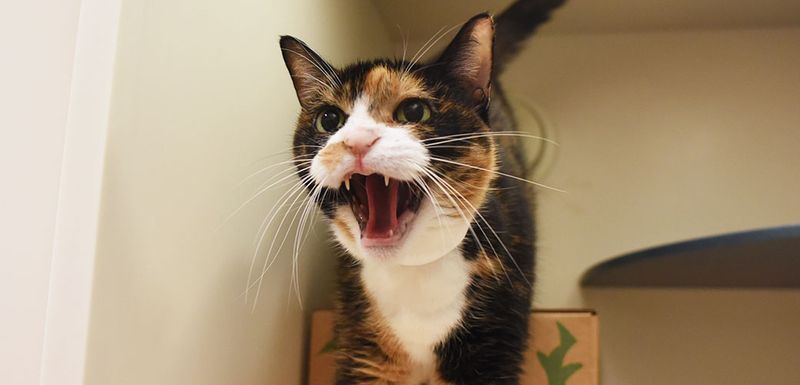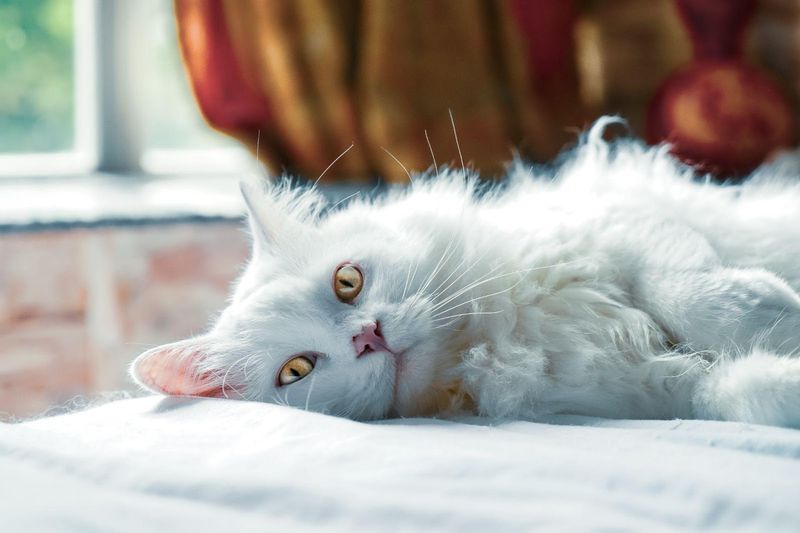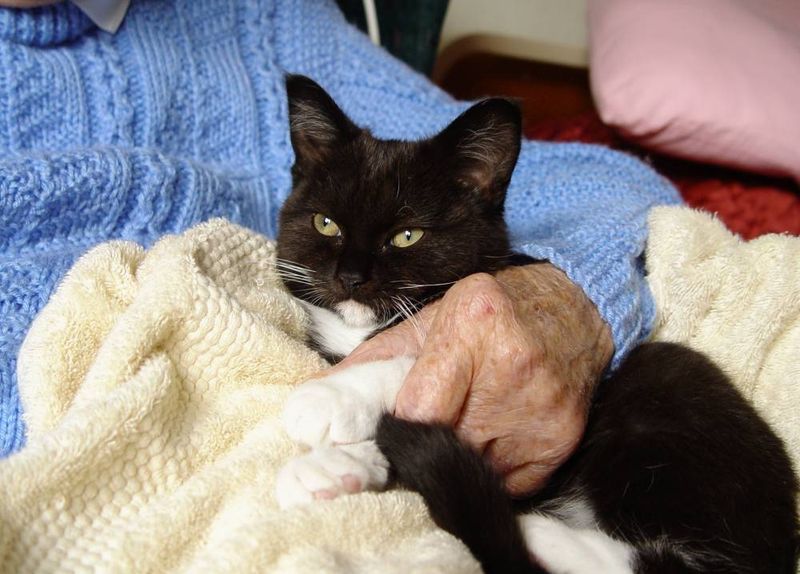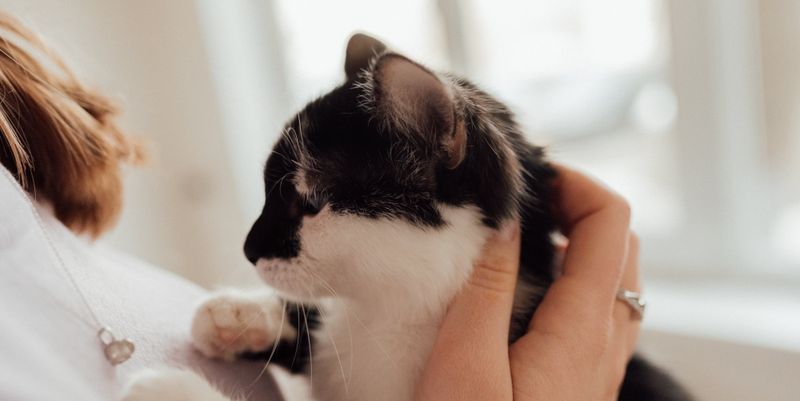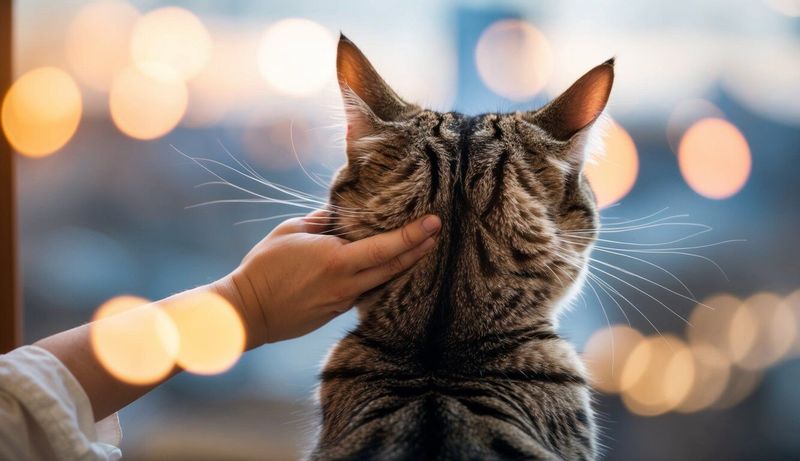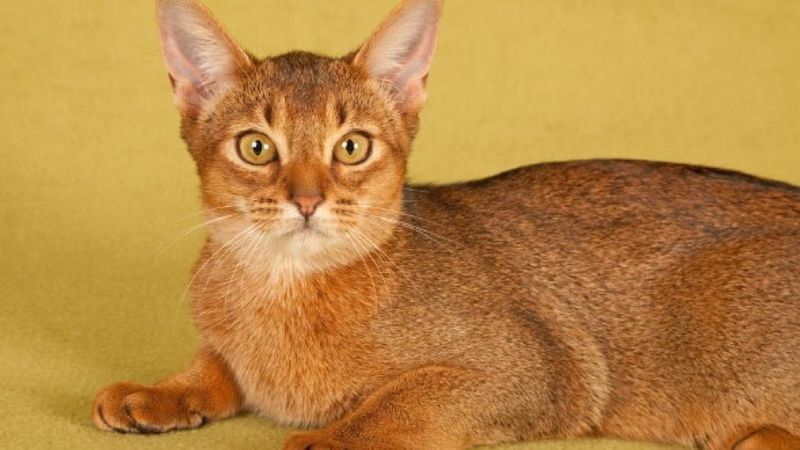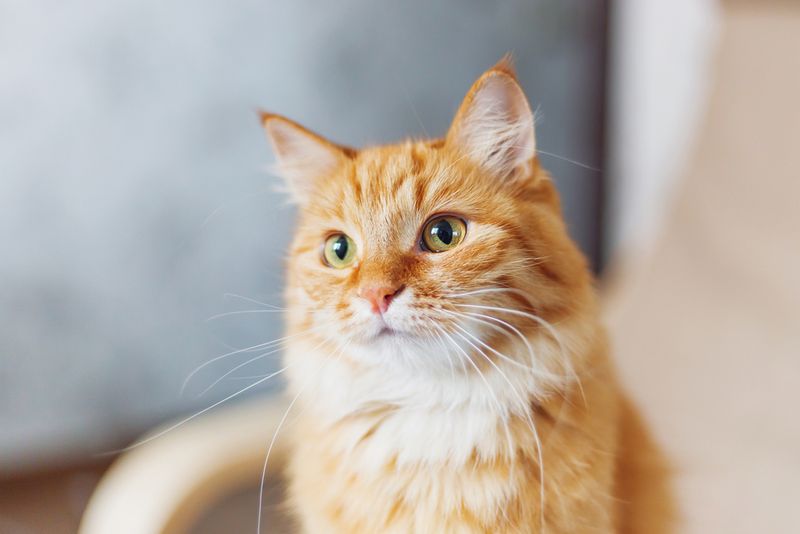📖 Table of Content:
- 1. The Midnight Health Alert
- 2. The Guardian of the Baby
- 3. The Emotional Support Specialist
- 4. The Fire Alarm Substitute
- 5. The Seizure Predictor
- 6. The Nursing Home Companion
- 7. The Diabetes Monitor
- 8. The Post-Surgery Healer
- 9. The Carbon Monoxide Hero
- 10. The Grief Counselor
- 11. The Intruder Detector
- 12. The Stroke Response Team
Cats have a mysterious way of weaving themselves into our lives, becoming much more than simple pets. They comfort us in tough times, make us laugh with their antics, and sometimes even save our lives in unexpected ways. These furry companions reveal their true nature in special moments that remind us why humans have cherished them for thousands of years.
1. The Midnight Health Alert
A woman in Florida woke to her cat repeatedly pawing at her breast, focusing on one specific spot with unusual persistence. Initially annoyed by this behavior, she eventually visited her doctor and discovered early-stage breast cancer exactly where her cat had been pawing.
Medical professionals believe the cat likely detected subtle chemical changes or temperature differences in the tissue. The early detection allowed for prompt treatment, potentially saving the woman’s life. Cats possess extraordinary sensory abilities that science is only beginning to understand.
Their noses contain 200 million scent receptors, making them incredibly sensitive to biochemical changes in the human body.
2. The Guardian of the Baby
Parents set up a baby monitor to keep an eye on their infant but discovered their cat had already taken on the job. The feline would rush to the crib whenever the baby cried, then meow loudly until someone came to check.
On one particularly memorable night, the cat’s persistent alerting led the parents to find their baby struggling to breathe due to congestion. The quick response allowed them to clear the baby’s airway before any harm occurred.
This protective behavior extends beyond this single case. Many cat owners report similar guardian-like conduct, suggesting cats form genuine bonds with human infants they consider part of their family unit.
3. The Emotional Support Specialist
During a severe panic attack, a college student found herself unable to breathe normally. Her cat, previously napping across the room, suddenly approached and began purring while pressing against her chest.
The rhythmic vibration of the purr helped regulate her breathing pattern. Scientists have discovered that cat purrs occur at a frequency of 25-150 Hertz, a range shown to promote healing and reduce stress in humans.
The weight and warmth of a cat on your chest can also help ground someone experiencing anxiety. Therapy cats are increasingly recognized for their ability to help people with anxiety disorders, PTSD, and depression, providing comfort without judgment or expectation.
4. The Fire Alarm Substitute
A family in Chicago was sound asleep when their house caught fire in the middle of the night. Their smoke detector had malfunctioned, but their cat sprang into action, jumping on the parents’ bed and making loud, unusual vocalizations until everyone woke up.
The family escaped just minutes before the fire engulfed their bedrooms. Firefighters later confirmed that without the cat’s warning, the outcome would likely have been tragic.
Cats have significantly more sensitive noses than humans and can detect smoke particles at much lower concentrations. Their acute hearing also helps them notice unusual sounds, such as the crackling of flames, before humans become aware.
5. The Seizure Predictor
A teenager with epilepsy noticed a strange pattern: before each seizure, her cat would become unusually attentive and refuse to leave her side. The family began using the cat’s behavior as an early warning system, giving the girl time to take safety precautions.
Neurologists believe cats may detect subtle changes in body odor or behavior that occur before a seizure. Some cats have been formally trained as seizure alert animals, though many develop this ability naturally with owners they’re closely bonded to.
The reliability of these feline warnings has allowed some epilepsy patients to regain the independence they thought was lost forever, knowing they’ll have precious minutes of warning before a seizure begins.
6. The Nursing Home Companion
Oscar the cat gained fame for his uncanny ability to predict death at a nursing home in Rhode Island. Staff noticed he would curl up beside residents who were within hours of passing away, providing comfort during their final moments.
The cat’s accuracy was so remarkable that the medical staff began calling family members when Oscar settled with a patient, giving them time to say goodbye. His presence seemed to bring peace to those transitioning, a gift beyond measure.
While some suggest Oscar might detect biochemical changes associated with imminent death, others believe he simply recognized patterns in staff behavior. Regardless of the explanation, his compassionate presence transformed how staff viewed cats’ emotional intelligence.
7. The Diabetes Monitor
A man with diabetes was surprised when his newly adopted cat began acting strangely whenever his blood sugar dropped dangerously low.
The cat would pat his face and meow loudly until he checked his levels and took glucose. After several consistent incidents, his doctor suggested documenting the cat’s behavior. The records showed the cat could detect hypoglycemic episodes with remarkable accuracy, often before his medical devices alerted him.
Researchers believe cats can smell the chemical changes that occur during blood sugar fluctuations. Some diabetics now participate in programs that pair them with cats specially trained to alert to these dangerous drops, providing an extra layer of safety.
8. The Post-Surgery Healer
After undergoing major surgery, a woman noticed her cat would lie directly on her healing incision site. Initially worried about infection, she consulted her doctor, who was surprised to find the incision healing faster than expected.
The scientific explanation may lie in the cat’s purr. Studies have shown that frequencies between 25-50 Hz can promote tissue regeneration and bone growth. A cat’s purr typically falls within this therapeutic range.
The cat continued this behavior through her recovery, seemingly aware of exactly where healing was needed. Many veterinarians now acknowledge the potential healing properties of feline purring, with some rehabilitation centers even incorporating “purr therapy” for patients recovering from injuries.
9. The Carbon Monoxide Hero
A couple was napping when their cat began frantically running between them, swatting their faces and making unusual vocalizations.
The typically calm feline’s behavior was so out of character that they finally got up, feeling strangely dizzy and confused. Upon standing, their symptoms worsened, prompting them to leave the house and call emergency services.
Responders discovered a severe carbon monoxide leak from their furnace that had reached near-lethal levels. Cats can detect carbon monoxide at much lower concentrations than humans. Their smaller body mass means they experience symptoms sooner, potentially explaining why the cat recognized the danger before its owners showed serious symptoms of poisoning.
10. The Grief Counselor
Following the loss of his wife, an elderly man fell into deep depression. His cat, previously bonded primarily with his wife, changed its behavior dramatically. The feline began sleeping beside him every night and following him throughout the day.
The cat would place a paw on his hand whenever he cried, a gesture it had never shown before. This simple act of connection became a lifeline during his darkest moments. Mental health professionals recognize the therapeutic value of pets during grief.
The unconditional presence of an animal can reduce the isolation that often accompanies loss. In this case, the cat seemed to intuitively understand its new role as primary emotional support.
11. The Intruder Detector
A single mother was awakened by her cat’s aggressive hissing—behavior completely out of character for her normally friendly pet. The cat was focused intensely on the bedroom door, back arched and fur standing on end.
Trusting her cat’s warning, she quietly called the police. Officers arrived to find an intruder had broken in and was still in the home. The cat had detected the stranger’s presence long before any human would have noticed.
Cats possess extraordinary hearing capabilities, detecting frequencies up to 64,000 Hz compared to humans’ maximum of about 20,000 Hz. Their whiskers can also sense subtle air movements, making them naturally equipped security systems that can detect disturbances imperceptible to humans.
12. The Stroke Response Team
An elderly man living alone experienced a stroke while reading in his armchair. Unable to reach his phone, he was stranded until his three cats began behaving in coordinated ways he’d never witnessed before.
One cat repeatedly jumped at the door handle while another knocked the phone off its cradle. The third cat continuously meowed at him, keeping him conscious. A neighbor, hearing the unusual commotion, came to investigate and immediately called an ambulance.
Doctors confirmed that the quick medical response, made possible by the cats’ behavior, significantly reduced the stroke’s long-term effects. While science hasn’t fully explained such coordinated helping behavior in cats, similar cases suggest they understand when their humans are in distress.
